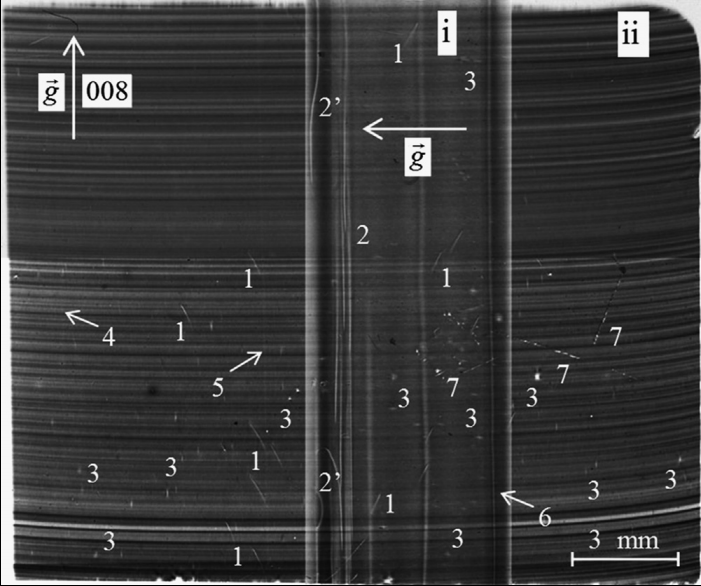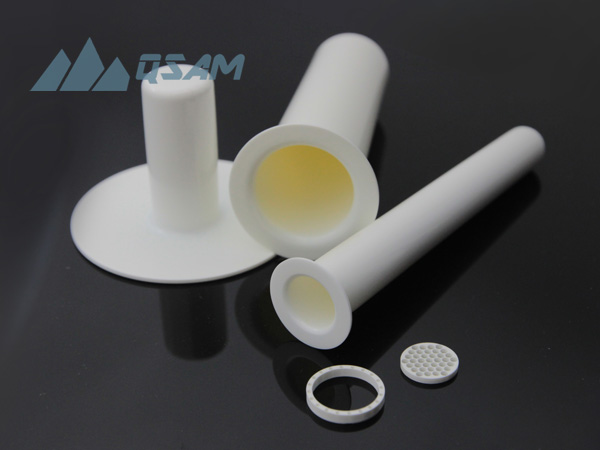Revolutionary Advancements in ZnGeP2 Crystal Growth Achieved by Russian Research Team
Introduction
In the recent advancements in the field of material science, particularly in the area of crystal growth technology, have played a crucial role in the development of electronic, optoelectronic, and laser technologies. A research team from the Siberian Branch of the Russian Academy of Sciences and the Yaroslav-the-Wise Novgorod State University has recently achieved a significant breakthrough in the growth of ZnGeP2 (ZGP) crystals, which has been published in the renowned academic journal "Journal of Crystal Growth". This research not only demonstrates an innovative crystal growth technique but also holds great importance for improving crystal quality and its applications in high-tech domains.
Importance of ZGP Crystals and Research Background
ZnGeP2 crystals are highly valued for their exceptional nonlinear optical properties, particularly in mid-infrared laser applications. These crystals can effectively convert laser wavelengths and are widely used in areas such as laser medicine, long-distance communication, and military surveillance. However, traditional crystal growth techniques, such as the horizontal Bridgman method and the Czochralski method, often suffer from the presence of numerous defects and inhomogeneities within the crystals, limiting their performance in advanced applications.

Growth striations in ZGP crystals
Innovative Vertical Bridgman Growth Technique
The Russian research team has adopted an innovative vertical Bridgman growth technique, which primarily utilizes pyrolytic boron nitride (PBN) crucibles under precisely controlled environmental conditions. Compared to the traditional methods, this new technique, with its vertical growth configuration, optimizes the thermal gradient distribution and reduces the thermal stress during the crystal growth process, significantly improving the structural integrity and optical quality of the crystals.
Furthermore, the use of high-purity chemical precursors ensures the minimization of impurities during the reaction process, further enhancing the transparency and optical homogeneity of the crystals. Through this method, the research team has successfully produced ZGP crystals with lower optical losses, laying the foundation for the manufacture of high-performance optical devices.
The Key Role of PBN Crucibles and Supplier Selection

PBN Crucible
PBN crucibles play a crucial role in the new technology due to their exceptional high-temperature stability and chemical inertness. This material can withstand extremely high temperatures without undergoing chemical reactions, providing an ideal environment for the growth of ZGP crystals.
QSAM inc., as a leading PBN crucible manufacturer in the market, provides high-quality crucibles that can effectively support the experimental needs of the research community. Their professional manufacturing capabilities and customized services ensure that researchers can obtain the most suitable crucibles for their specific experimental requirements, thereby advancing the progress of scientific research.
Advanced Crystal Defect Analysis Technique
To further improve the crystal quality, the team has introduced the X-ray transmission topography method based on the Borrmann effect for a detailed analysis of the internal structure of the crystals. This advanced analysis technique can precisely identify and locate the defects formed during the crystal growth process, such as dislocations, inclusions, and growth striations. By thoroughly analyzing these defects, the researchers can adjust the growth parameters and optimize the growth environment, significantly reducing the generation of defects and improving the overall quality and performance of the crystals.
Moreover, this analysis method provides a new perspective for the study of crystal growth, allowing the research team to gain a deeper understanding of the microscopic mechanisms and influencing factors, providing valuable data and experience for future research and applications.
Potential Applications and Future Prospects
The improved growth technique for ZnGeP2 crystals has opened up various potential application prospects. In the manufacturing of optical parametric oscillators (OPOs), these crystals can be used to produce more efficient mid-infrared lasers, which is of great importance for enhancing the performance and efficiency of laser systems. Additionally, ZGP crystals have shown promising potential in the fields of infrared imaging and long-distance laser communication, particularly in military and aerospace applications, where they can be used to fabricate high-performance infrared detection and tracking systems.
The breakthrough achieved by the Russian research team not only provides strong material support for the development of optoelectronics and laser technology but also paves the way for the technological renewal and product upgrades of the related industries. In the coming years, as the production technology is further refined and optimized, this high-quality ZGP crystal is expected to occupy a more significant position in the global market.
Conclusion
The groundbreaking achievement of the Russian research team in ZnGeP2 crystal growth technology has not only elevated the quality and production efficiency of the crystals but also advanced the field of material science, particularly in the domain of nonlinear optical materials. Through continuous technological innovation and quality control, future research will enable these crystals to better serve the progress of science and technology, providing effective solutions to various technical challenges for the benefit of human society.
